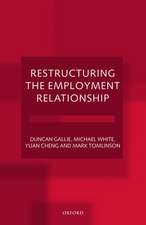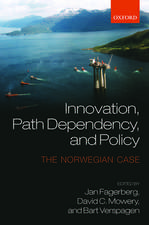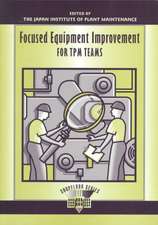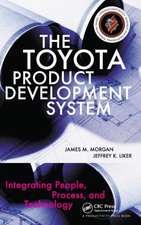Industry Structure and Pricing: The New Rivalry in Infrastructure: Studies in Industrial Organization, cartea 22
Autor Mark A. Jamisonen Limba Engleză Hardback – 30 noi 1999
| Toate formatele și edițiile | Preț | Express |
|---|---|---|
| Paperback (1) | 995.34 lei 43-57 zile | |
| Springer Us – 8 dec 2010 | 995.34 lei 43-57 zile | |
| Hardback (1) | 1001.50 lei 43-57 zile | |
| Springer Us – 30 noi 1999 | 1001.50 lei 43-57 zile |
Din seria Studies in Industrial Organization
- 18%
 Preț: 1232.26 lei
Preț: 1232.26 lei - 15%
 Preț: 642.36 lei
Preț: 642.36 lei -
 Preț: 403.91 lei
Preț: 403.91 lei - 18%
 Preț: 1225.79 lei
Preț: 1225.79 lei - 15%
 Preț: 643.99 lei
Preț: 643.99 lei -
 Preț: 385.84 lei
Preț: 385.84 lei - 18%
 Preț: 1224.36 lei
Preț: 1224.36 lei - 18%
 Preț: 951.14 lei
Preț: 951.14 lei - 15%
 Preț: 643.84 lei
Preț: 643.84 lei -
 Preț: 388.34 lei
Preț: 388.34 lei -
 Preț: 397.16 lei
Preț: 397.16 lei - 18%
 Preț: 951.29 lei
Preț: 951.29 lei - 15%
 Preț: 637.78 lei
Preț: 637.78 lei - 18%
 Preț: 950.03 lei
Preț: 950.03 lei - 18%
 Preț: 956.81 lei
Preț: 956.81 lei -
 Preț: 384.86 lei
Preț: 384.86 lei - 15%
 Preț: 641.53 lei
Preț: 641.53 lei - 15%
 Preț: 647.92 lei
Preț: 647.92 lei - 15%
 Preț: 639.73 lei
Preț: 639.73 lei -
 Preț: 389.70 lei
Preț: 389.70 lei - 18%
 Preț: 1388.53 lei
Preț: 1388.53 lei - 5%
 Preț: 668.35 lei
Preț: 668.35 lei - 20%
 Preț: 577.49 lei
Preț: 577.49 lei -
 Preț: 395.25 lei
Preț: 395.25 lei - 15%
 Preț: 639.73 lei
Preț: 639.73 lei
Preț: 1001.50 lei
Preț vechi: 1221.34 lei
-18% Nou
Puncte Express: 1502
Preț estimativ în valută:
191.70€ • 208.30$ • 161.13£
191.70€ • 208.30$ • 161.13£
Carte tipărită la comandă
Livrare economică 21 aprilie-05 mai
Preluare comenzi: 021 569.72.76
Specificații
ISBN-13: 9780792377085
ISBN-10: 0792377087
Pagini: 224
Ilustrații: XI, 207 p. 5 illus.
Dimensiuni: 155 x 235 x 18 mm
Greutate: 0.49 kg
Ediția:2000
Editura: Springer Us
Colecția Springer
Seria Studies in Industrial Organization
Locul publicării:New York, NY, United States
ISBN-10: 0792377087
Pagini: 224
Ilustrații: XI, 207 p. 5 illus.
Dimensiuni: 155 x 235 x 18 mm
Greutate: 0.49 kg
Ediția:2000
Editura: Springer Us
Colecția Springer
Seria Studies in Industrial Organization
Locul publicării:New York, NY, United States
Public țintă
ResearchCuprins
1. Introduction.- 2. The New Rivalry in Infrastructure.- 3. Tests for Natural Monopoly.- 4. Theory and Application of Subsidy-Free Prices.- 5. Sustainability of Firms and Prices.- 6. Prices for Inputs Sold to Competitors.- 7. Conclusion.


















